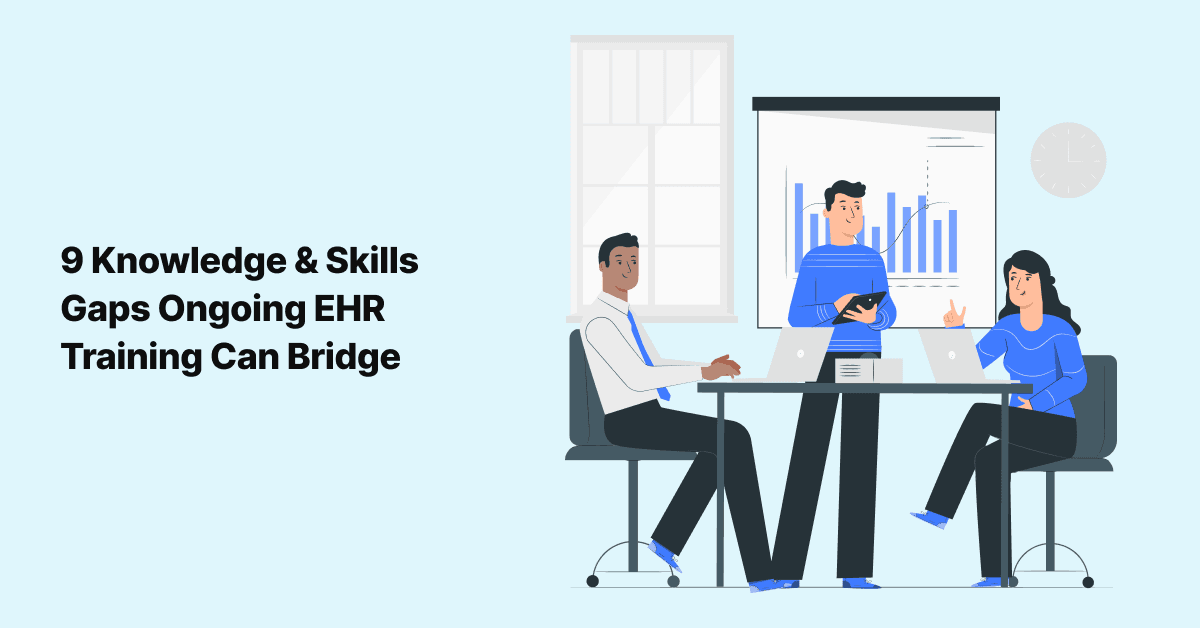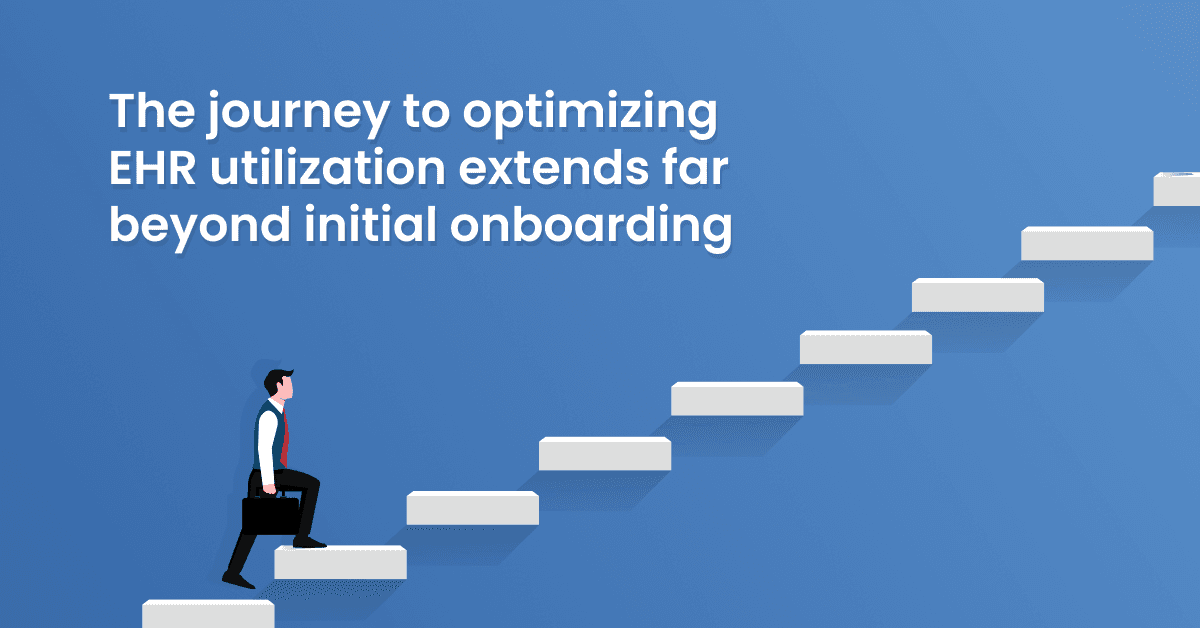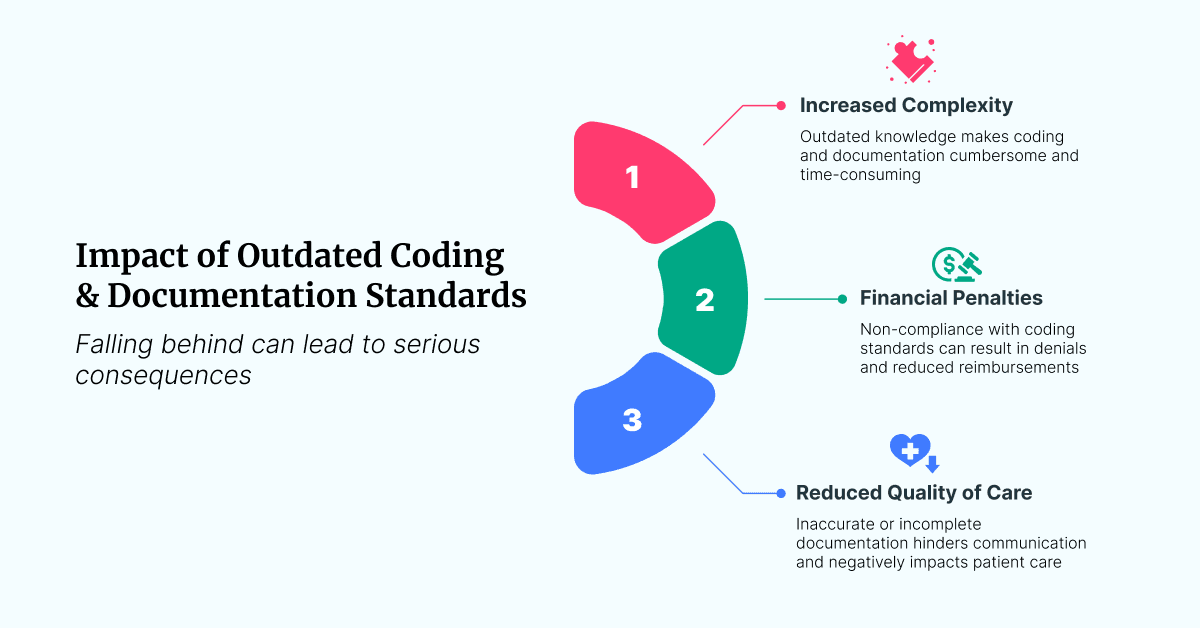
How Covid-19 will Change the Face of Digital Learning for Healthcare IT
It’s hard to imagine looking for the bright side of Covid-19 as we continue to adjust our lifestyles to reduce …

I’m sure you've invested considerable resources into training your EHR users.
Yet, here's a startling fact:
94.6% of EHR users claimed their ability to use the EHR could be improved
And,
75% feel a need for additional training.
These statistics, not mere conjecture but insights directly from the users themselves, illuminate a critical reality:

It's a call to action, urging healthcare organizations to delve deeper into ongoing training initiatives to bridge the evident knowledge and skill gaps. In this blog, we'll explore nine such gaps and how continuous EHR training can effectively address them, ensuring smoother operations and enhanced patient care.
What this blog covers:
One crucial revelation emphasizes the urgency of bridging these knowledge and skills gaps: humans forget 60% of what they learn within hours.
This stark reality suggests that training resources may go to waste, and EHRs may not reach their full potential. Such underutilization not only affects Return on Investment but also burdens physicians, disrupting schedules and adding to EHR workloads.
Failing to bridge these gaps compromises operational efficiency and patient care quality, emphasizing the urgent need for ongoing EHR training.
Want to set your training up for success? Check out our guide on How to Approach Epic Software Training and Succeed.
EHRs are powerful, but their effectiveness hinges on user knowledge. Often, clinicians lack full awareness of their specific EHR's functionalities, leading to:
Did you know that most CIOs prefer Just-in-Time training tools to improve EHR usability, click here to know why.
Clinicians wear many hats, and their time is precious. Keeping pace with the ever-evolving landscape of coding and documentation standards can be a significant challenge.
However, falling behind can have serious consequences:

But the good news is that ongoing EHR training can be your savior. Regular refresher sessions, learning when it is convenient, and Just-in-Time help can ensure no coding and documentation is left behind.
Just like coding and documentation standards, HIPAA regulations and data security best practices are essential for healthcare organizations.
Failing to comply can have severe consequences, mirroring those outlined for coding and documentation like financial penalties, reputational damages, and, in some cases, even compromised patient care.
To be able to optimize EHR workflows is most definitely a skill, and at times, it might take planning and time to master it. Continuous EHR training can help with that. It provides simulation training opportunities to practice in a safe environment and training in the workflow through Just-in-Time resources.
Incomplete data entry poses a significant challenge in EHR utilization, compromising the integrity and reliability of patient records. Clinicians may struggle to capture all relevant information accurately, leading to gaps in patient history, diagnosis, and treatment plans. These gaps can hinder effective clinical decision-making and care coordination, potentially impacting patient safety and outcomes.
Ongoing EHR training offers valuable guidance through microlearning videos and tip sheets, making mastery of data entry accuracy feel effortless. With the right tools and resources at their fingertips, clinicians can ensure that every entry is thorough and precise, enhancing the quality and reliability of patient records.
Documentation burden often contributes to clinician burnout. Ongoing training empowers clinicians to:
Technical glitches can arise. Ongoing training equips users with the skills to:
Bridging the knowledge and skills gaps through ongoing EHR training isn't just about immediate fixes; it's an investment in the long-term success of healthcare organizations. By addressing these gaps, organizations can unlock a multitude of benefits that extend far into the future.
Firstly, enhanced EHR utilization leads to improved operational efficiency. Staff who are proficient in using the system can streamline workflows, reduce documentation errors, and maximize productivity. This efficiency translates into time saved, letting healthcare focus on delivering quality patient care rather than navigating complex systems.
Secondly, ongoing EHR training fosters a culture of continuous improvement within healthcare organizations. Staff members become more adaptable to changes in technology and regulations, ensuring that the organization remains agile and responsive to evolving industry standards.
Moreover, bridging these gaps can contribute to better patient outcomes. Clinicians armed with comprehensive knowledge and refined skills can leverage EHR functionalities to make more informed clinical decisions, enhance care coordination, and ultimately improve patient satisfaction and health outcomes.
Additionally, investing in ongoing EHR training demonstrates a commitment to staff development and satisfaction. Equipped with the skills needed to excel in their roles, employees feel more empowered and engaged, leading to reduced burnout rates and higher retention levels.
In essence, bridging the knowledge and skills gaps with ongoing EHR training is not just a necessity; it's a strategic investment with far-reaching benefits. By prioritizing continuous learning and development, healthcare organizations can pave the way for a brighter, more efficient, and patient-centered future. It certainly would be wrong to say, “Ongoing EHR training is a modern healthcare must-have.”
Join over 3,200 subscribers and keep up-to-date with the latest innovations & best practices in Healthcare IT.

It’s hard to imagine looking for the bright side of Covid-19 as we continue to adjust our lifestyles to reduce …

Return on investment (ROI) is one of the most important metrics for any business especially if they are …

The implementation of an EHR is certainly a breakthrough for your health system; however, clinicians are still …